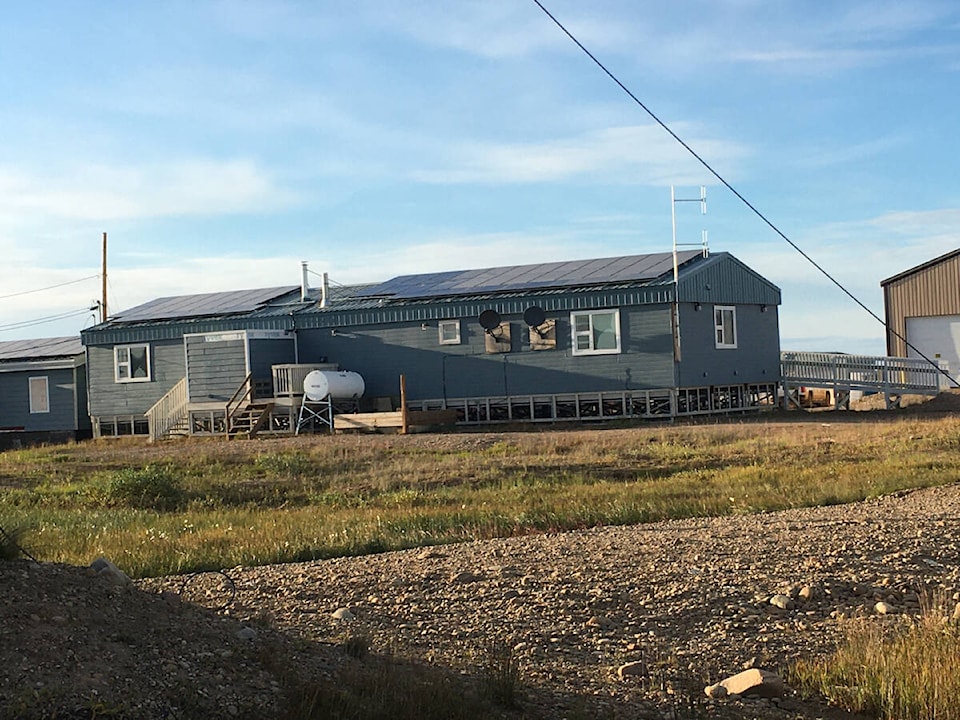It took a bit longer than expect, but Ulukhaktok now has four new solar systems installed at its municipal buildings, dramatically cutting the diesel requirements for four buildings.
Initially the project was supposed to be completed last summer, but barge delays prevented delivery of the solar panels on time.
“They were waiting for 10 days without the material having arrived and that’s already after we delayed for two weeks,” said Green Sun Rising owner Klaus Dohring. “We have lots of projects, but right now, we don’t have new awards in the Beaufort Delta. We do have a number of awards across Nunavut and I’m expecting new awards for Labrador.
“So right now, for the Beaufort Delta, we would like to do more. I’m sending a person to Tuktoyaktuk and to Sachs Harbour.
“We obviously like to continue, but at this point in time, we do not have fresh awards for the Beaufort Delta region. Our presint awards are predominantly across Nunavut and including our Northern most and largest systems.”
But the system is up and running and now the community is saving up to $35,000 a year in diesel costs and avoiding burning between 12,000 and 13,000 litres of fossil fuel annually.
They’re not done. Dohring said a technician was now en route to Sachs Harbour and then Tuktoyaktuk to install more systems for municipal buildings.
These will join systems Green Sun Rising has installed in Tsiigehtchic, Fort McPherson and Paulatuk — the latter system reducing the Paulatuk hamlet office to between four and six per cent of previous years since going online in 2019.
“Obviously, the solar generation is mainly in the shoulder months and the peak months. In December and January, there is no solar generation,” said Dohring. “The solar system on the Paulatuk hamlet office in last year generated 94 per cent of the electricity that the facility consumed.”
Dohring says he can do a lot more for the Beaufort Delta, but Northwest Territories Power Corporation limits solar systems to a maximum of 15 kilowatts. This restriction does not exist in Nunavut, Northern Quebec or Labrador, so he said he’s focusing on buildings systems in those jurisdictions — and is transforming communities as he does it.
His proudest accomplishment is a 10kW system in Grise Fiord — the northernmost settlement in Canada. That little system put out 93 kWs of electricity earlier this month, which Dohring said outperformed his best systems in his home base in Windsor, Ont.
“That is world-champion level,” he said. “It’s blowing me away well it does. I have so much good news. It’s incredible.”
Dohring added that anyone considering using solar can calculate how much diesel they will save with a simple formula. Every 3.5 kilowatt hours of solar generates as much power as one litre of diesel.
